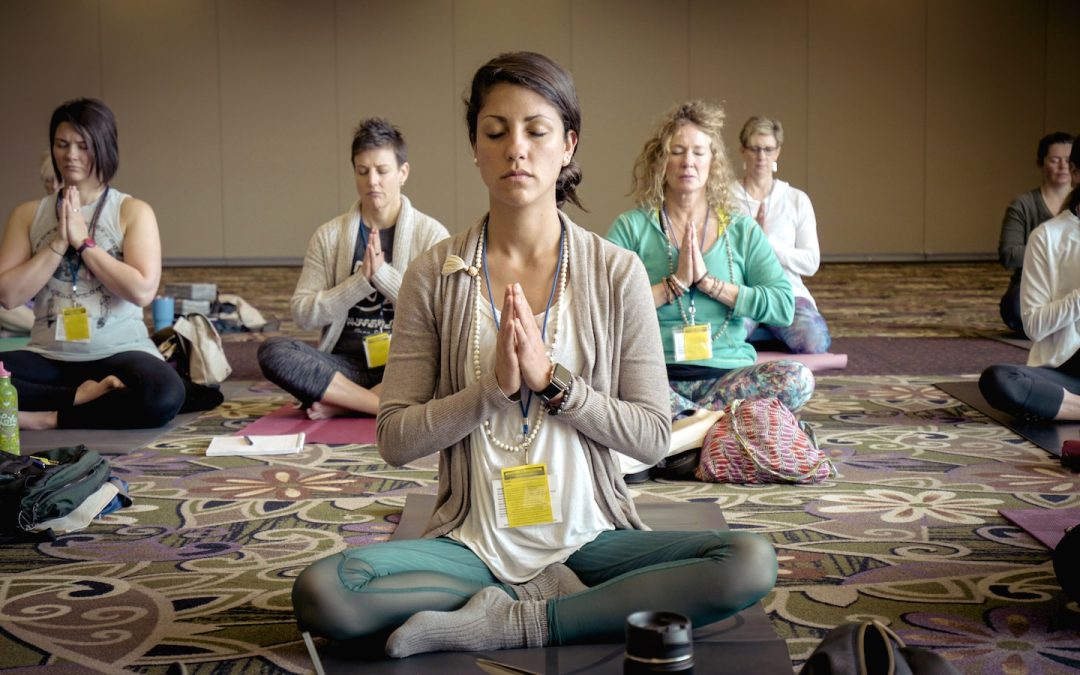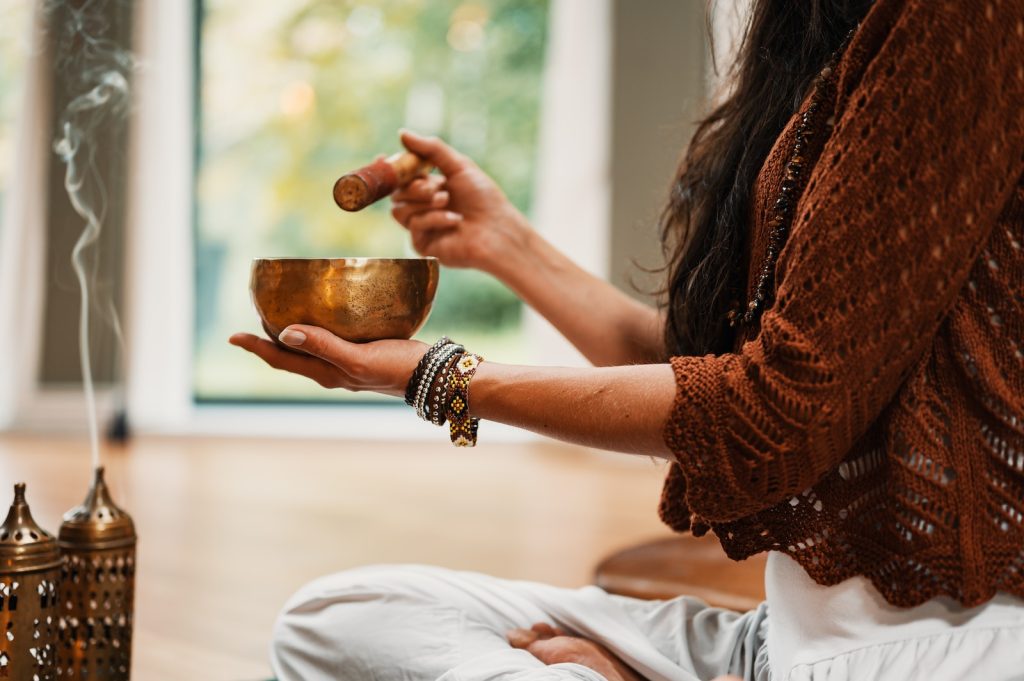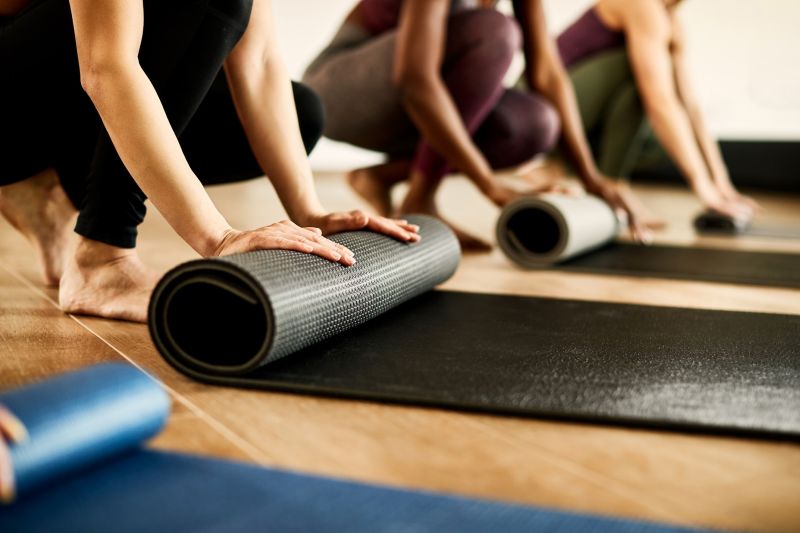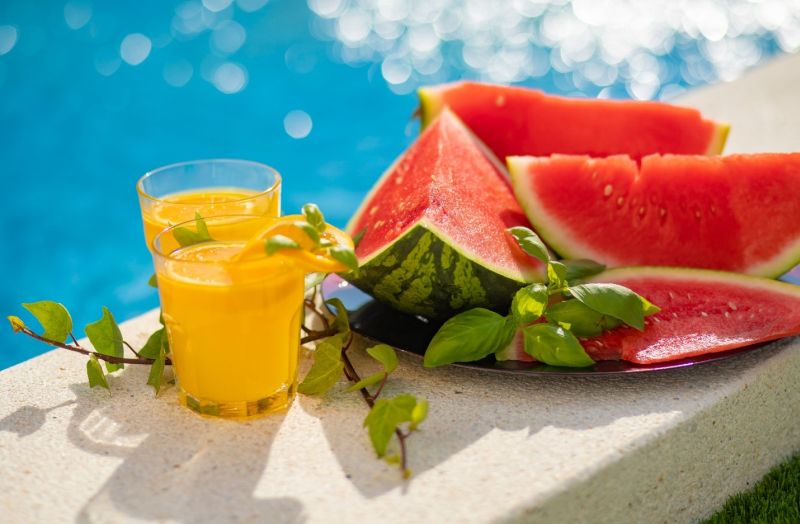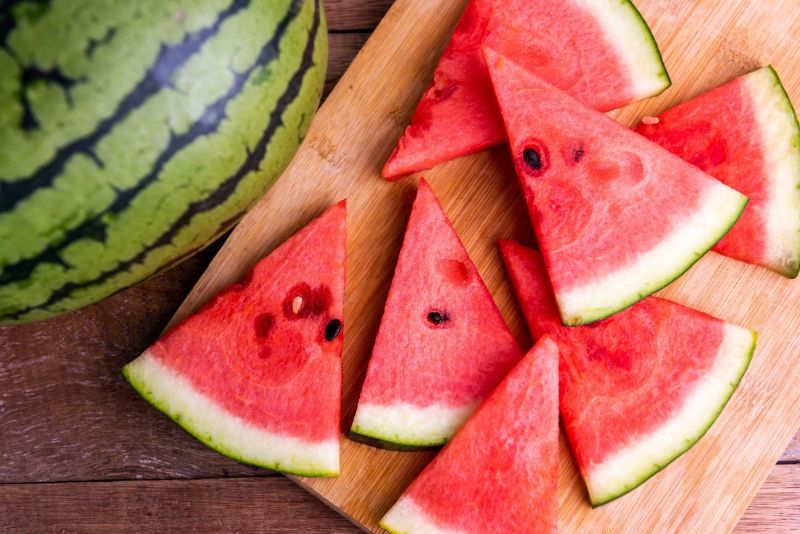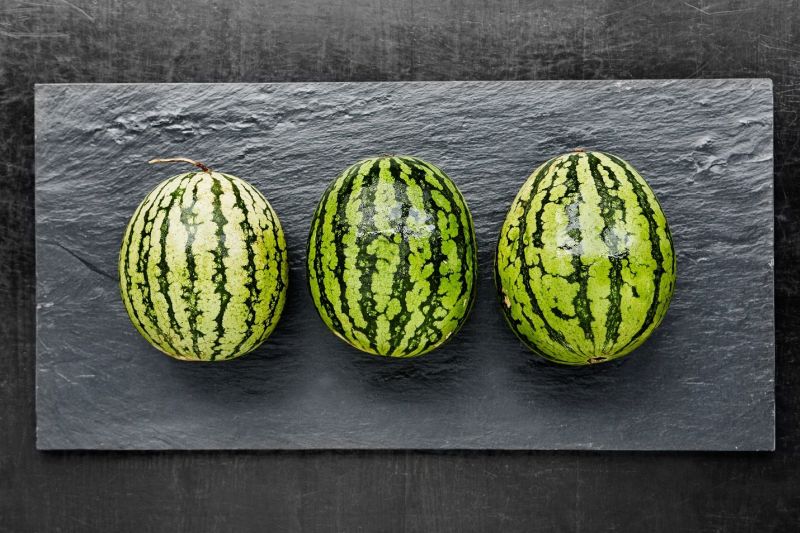
by Health And Healing AI | Nov 7, 2023 | Mindful Wellness, Mindfulness
Erase Stress with Ease: The Art of Mindfulness Meditation
Mindfulness Meditation: A Relaxing Way to Reduce Stress: If you’re feeling overwhelmed, stressed, or anxious, mindfulness meditation may be a helpful tool for reducing those feelings and promoting relaxation.
Mindfulness meditation is a practice that involves focusing your attention on the present moment, without judgment.
By doing so, you can become more aware of your thoughts, emotions, and physical sensations, and learn to respond to them in a more calm and centered way.
Research has shown that mindfulness meditation can be an effective way to reduce stress and anxiety, as well as improve overall well-being. One study found that participants who completed an 8-week mindfulness-based stress reduction program reported significant decreases in stress and anxiety, as well as improvements in mood and quality of life. Another study showed that mindfulness meditation can help reduce symptoms of depression and improve sleep quality. Whether you’re new to meditation or have been practicing for years, mindfulness meditation can be a valuable tool for managing stress and promoting relaxation.

Stress-Free Living: Mastering Mindfulness Meditation. Photo by Conscious Design
Understanding Mindfulness Meditation
Mindfulness meditation is a type of meditation that involves paying attention to the present moment while acknowledging and accepting one’s thoughts and feelings without judgment. This practice helps you become more aware of your thoughts and emotions and develop a more positive relationship with them.
Concept and Philosophy
The concept of mindfulness meditation is rooted in Buddhist philosophy, which emphasizes the importance of being present in the moment and cultivating a non-judgmental attitude towards oneself and others. Mindfulness meditation can be practiced in various forms, such as sitting meditation, walking meditation, or body scan meditation.
Benefits of Mindfulness Meditation
Research has shown that mindfulness meditation can have numerous benefits for both physical and mental health. Here are some of the benefits of mindfulness meditation:
- Reduces stress and anxiety: Mindfulness meditation can help reduce stress and anxiety by promoting relaxation and reducing the activity of the amygdala, the part of the brain responsible for the fight-or-flight response.
- Improves focus and concentration: Mindfulness meditation can improve focus and concentration by training the mind to stay in the present moment and avoid distractions.
- Boosts immune system: Mindfulness meditation has been shown to boost the immune system by reducing inflammation and increasing the activity of natural killer cells, which help fight off infections and cancer.
- Enhances emotional well-being: Mindfulness meditation can enhance emotional well-being by increasing positive emotions such as joy, compassion, and gratitude, and reducing negative emotions such as anger, fear, and sadness.
Overall, mindfulness meditation is a simple yet powerful practice that can help you reduce stress, improve focus, and enhance your overall well-being.
Techniques for Mindfulness Meditation

The Art of Letting Go: Mindfulness Meditation’s Secret. Stock Free image
Mindfulness Meditation: A Relaxing Way to Reduce Stress: If you’re new to mindfulness meditation, it’s important to start with simple techniques that can help you focus your attention and reduce stress. Here are two effective techniques for mindfulness meditation:
Breathing Exercises
One of the simplest and most effective techniques for mindfulness meditation is to focus on your breath. Sit in a comfortable position, close your eyes, and take a few deep breaths. Then, focus your attention on your breath as it moves in and out of your body. Notice the sensation of the air moving in and out of your nostrils or the rise and fall of your chest. If your mind starts to wander, gently bring your attention back to your breath.
To make this exercise more effective, try counting your breaths. Inhale for a count of four, hold your breath for a count of four and exhale for a count of four. Repeat this cycle several times, focusing on your breath and counting each inhale and exhale.
Body Scan Technique
The body scan technique is another effective technique for mindfulness meditation. Start by lying down on your back in a comfortable position. Close your eyes and take a few deep breaths. Then, focus your attention on your body, starting at your toes and working your way up to the top of your head. Notice any sensations or tension in each part of your body and try to release any tension as you focus on each body part.
As you scan your body, you may notice areas of tension or discomfort. Rather than trying to ignore these sensations, focus on them and try to release the tension. You can also use this technique to focus on specific parts of your body that are particularly tense or sore, such as your back or neck.
By practicing these techniques for mindfulness meditation, you can reduce stress and improve your overall well-being. Start with short meditation sessions and gradually increase the length of your sessions as you become more comfortable with the practice.
Mindfulness Meditation for Stress Reduction
Stress is a common experience that affects everyone at some point in their lives. Mindfulness meditation is a proven technique that can help reduce stress and promote relaxation. By focusing your attention on the present moment and being aware of your thoughts and feelings, you can learn to manage stress and improve your overall well-being.
Role of Mindfulness in Stress Management
Mindfulness meditation is a practice that involves paying attention to the present moment without judgment. When you are mindful, you are aware of your thoughts, feelings, and bodily sensations. This awareness can help you identify the sources of stress in your life and develop strategies to manage them.
Research has shown that mindfulness meditation can reduce symptoms of anxiety and depression, improve sleep quality, and enhance overall well-being. By practicing mindfulness regularly, you can train your mind to focus on the present moment and let go of negative thoughts and emotions.
Practical Tips for Stress Reduction

Daily Zen: Incorporating Mindfulness for Stress Relief. Photo by Nik
If you are new to mindfulness meditation, here are some practical tips to help you get started:
- Find a quiet and comfortable place to meditate.
- Set aside a specific time each day to practice mindfulness.
- Begin by focusing on your breath. Notice the sensation of air moving in and out of your body.
- If your mind wanders, gently bring your attention back to your breath.
- Start with short meditation sessions and gradually increase the length of your practice.
- Use guided meditation apps or videos to help you stay focused.
In addition to mindfulness meditation, there are other techniques you can use to manage stress, such as deep breathing, progressive muscle relaxation, and visualization. Experiment with different techniques to find what works best for you.
In conclusion, mindfulness meditation is a powerful tool for reducing stress and promoting relaxation. By practicing mindfulness regularly, you can train your mind to focus on the present moment and let go of negative thoughts and emotions. Try incorporating mindfulness into your daily routine and see how it can benefit your overall well-being.
Mindfulness Meditation for Relaxation
If you’re feeling stressed and overwhelmed, mindfulness meditation can be an effective way to reduce stress and promote relaxation. By practicing mindfulness, you can become more aware of your thoughts and emotions and learn to manage them in a more productive way. In this section, we’ll explore how you can incorporate mindfulness into your daily routine and use it as a relaxation technique.
Incorporating Mindfulness in Daily Routine
One of the best ways to incorporate mindfulness into your daily routine is to set aside time each day for meditation. Start by finding a quiet, comfortable place where you won’t be disturbed.
Sit in a comfortable position, with your back straight and your feet flat on the floor. Close your eyes and focus on your breath, noticing the sensation of air moving in and out of your body. If your mind starts to wander, gently bring your attention back to your breath.
You can also practice mindfulness throughout the day by paying attention to your senses. Notice the sights, sounds, smells, and tastes around you, without judgment or analysis. This can help you stay present in the moment and reduce stress and anxiety.
Relaxation Techniques

Mindful Living: The Path to Inner Peace and Resilience. Photo by engin akyurt
Mindfulness Meditation: A Relaxing Way to Reduce Stress: Mindfulness meditation can also be used as a relaxation technique. By focusing on your breath and letting go of distracting thoughts, you can promote a sense of calm and relaxation. Here are some mindfulness meditation techniques you can try:
- Body scan meditation: Lie down on your back and close your eyes. Focus on your breath, and then slowly bring your attention to different parts of your body, starting with your toes and working your way up to your head. Notice any sensations or tension in each part of your body, and then release it as you exhale.
- Loving-kindness meditation: Sit in a comfortable position and close your eyes. Imagine someone you love, and silently repeat phrases of love and kindness to them. Then, imagine yourself and repeat the same phrases of love and kindness to yourself.
- Walking meditation: Find a quiet place to walk, preferably outdoors. Focus on your breath and the sensation of your feet touching the ground. If your mind starts to wander, gently bring your attention back to your breath and your surroundings.
By incorporating mindfulness into your daily routine and practicing relaxation techniques, you can reduce stress and promote a sense of calm and well-being.
Maintaining Consistency in Practice
Maintaining consistency in your mindfulness meditation practice is key to reaping the benefits of stress reduction and relaxation. Here are some tips to help you stay on track.
Creating a Meditation Schedule
One of the best ways to maintain consistency is to create a meditation schedule. Choose a time of day that works best for you, whether it’s first thing in the morning, during your lunch break, or before bed. Set aside at least 5-10 minutes each day for meditation, and gradually increase the time as you become more comfortable with the practice.
Use a calendar or planner to schedule your meditation sessions and treat them as you would at any other appointment. This will help you stay accountable and make meditation a regular part of your routine.
Overcoming Common Challenges
It’s important to acknowledge that maintaining consistency in your mindfulness meditation practice can be challenging at times. Here are some familiar challenges you may encounter, along with tips for overcoming them:
- Lack of motivation: If you’re feeling unmotivated to meditate, remind yourself of the benefits you’ll experience, such as reduced stress and improved focus. You may also find it helpful to set small goals for yourself, such as meditating for 5 minutes each day for a week.
- Distractions: It’s natural to experience distractions during meditation, such as thoughts, bodily sensations, or external noises. When this happens, simply acknowledge the distraction, and gently redirect your focus back to your breath or chosen meditation object.
- Difficulty sitting still: If you find it difficult to sit still for extended periods of time, try incorporating movement into your meditation practice. You can try walking meditation, yoga, or other gentle exercises that promote mindfulness.
By creating a meditation schedule and overcoming shared challenges, you can maintain consistency in your mindfulness meditation practice and experience the many benefits of stress reduction and relaxation.
Embark on a journey to holistic health with fasting and Mindfulness Meditation
Mindfulness meditation is a proven method for reducing stress and promoting relaxation.
It involves focusing on the present moment without judgment or distraction.
By doing so, you can develop a greater awareness of your thoughts and emotions and learn to manage them more effectively, according to Mindful.Org https://www.mindful.org/how-to-manage-stress-with-mindfulness-and-meditation/ meditation for stress allows you to find calm to face challenging situations with clarity, compassion, and intention.
There are many resources available for learning and practicing mindfulness meditation, including guided meditations like those found on:
YouTube – (https://youtube.com/watch?v=z6X5oEIg6Ak)
20-Minute Guided Meditation for Reducing Anxiety and Stress—Clear the Clutter to Calm Down – (https://youtube.com/watch?v=MIr3RsUWrdo)
Mindfulness-Based Stress Reduction (MBSR), which is effective in reducing stress and improving overall well-being – APA – https://www.apa.org/topics/mindfulness/meditation
[Mayo Clinic – https://www.mayoclinic.org/tests-procedures/meditation/in-depth/meditation/art-20045858
Harvard Gazette – https://news.harvard.edu/gazette/story/2018/04/less-stress-clearer-thoughts-with-mindfulness-meditation/
Positive Psychology – https://positivepsychology.com/mindfulness-based-stress-reduction-mbsr/
Conclusion
In conclusion, mindfulness meditation is a powerful tool that can help you reduce stress and anxiety, improve your mental and physical health, and increase your overall sense of well-being.
By practicing mindfulness meditation regularly, you can learn to be more present in the moment, develop greater self-awareness, and cultivate a greater sense of compassion and empathy for others.
Whether you’re new to meditation or have been practicing for years, there are many resources available to help you get started or deepen your practice.
From guided meditations to mindfulness apps and online courses, there are many ways to incorporate mindfulness meditation into your daily routine.
Remember, mindfulness meditation is not a quick fix or a cure-all for all of life’s problems. It requires patience, persistence, and a willingness to be present with whatever arises in the moment.
But with practice, you can learn to cultivate greater peace, clarity, and resilience in the face of life’s challenges.
So why not give mindfulness meditation a try? Whether you’re looking to reduce stress, improve your mental and physical health, or simply cultivate greater presence and awareness in your daily life, mindfulness meditation can be a powerful tool to help you achieve your goals.

by Health And Healing AI | Oct 25, 2023 | Health, Mindfulness
The Unseen Forces: The Impacts Voting in House Elections

Revealed: How Age-Based Voting Could Reshape Future House Elections. Photo by Unseen Histories
How Age Impacts Voting in House Elections: If you’re wondering how different age groups vote in House elections and why it matters, you’re not alone. Understanding voting patterns among different age groups is crucial in predicting electoral outcomes and shaping political campaigns. From Baby Boomers to Gen Z, each generation has its unique political beliefs, values, and priorities that influence their voting behavior.
In the 2022 midterm elections, younger voters, Black voters, and those living in urban areas continued to support Democratic candidates, while older, White and rural voters backed Republicans. According to a report by Pew Research Center, this trend is not new and has been consistent in previous elections. However, what makes the 2022 elections unique is the significant increase in voter turnout among younger generations, particularly Gen Z. A report by Tufts University’s Center for Information and Research on Civic Learning and Engagement (CIRCLE) found that Gen Z voted at a higher rate in 2022 than previous generations in their first midterm elections. This increased engagement among younger voters could have a significant impact on future electoral outcomes and policy decisions.
Understanding the generation gap in voting patterns is not only essential for political campaigns and election predictions but also for shaping policy decisions that affect different age groups. For instance, policies that address issues such as student debt, climate change, and healthcare are likely to resonate more with younger voters, while policies that prioritize national security and immigration may appeal more to older voters. As the country becomes more diverse and the population ages, understanding the generation gap in voting patterns will become increasingly important in shaping the future of American politics.
Understanding Generational Voting Patterns
Generational voting patterns have been a topic of interest for political scientists for decades. Understanding how different age groups vote and why they vote the way they do can provide valuable insights into the political landscape and help predict future election outcomes. Here’s a breakdown of the voting behavior of different generations in the House elections.
Baby Boomers’ Voting Behavior
Baby Boomers, born between 1946 and 1964, are the largest generation in the United States. They have consistently voted in high numbers, with a majority of them identifying as conservative. In recent years, they have leaned towards the Republican Party, with 51% of them voting for Republican candidates in the 2022 House elections. Baby Boomers tend to prioritize issues such as national security, healthcare, and the economy.
Generation X’s Voting Behavior
Generation X, born between 1965 and 1980, is a smaller generation than Baby Boomers and Millennials. They have been known to be more skeptical of institutions, including political parties. In the 2022 House elections, 46% of them voted for Democratic candidates, while 52% voted for Republicans. Generation X tends to prioritize issues such as job security, education, and healthcare.
Millennials’ Voting Behavior
Millennials, born between 1981 and 1996, are the largest generation in the workforce. They have been known to be more progressive and socially liberal than previous generations. In the 2022 House elections, 56% of them voted for Democratic candidates, while 42% voted for Republicans. Millennials tend to prioritize issues such as climate change, racial justice, and income inequality.
Generation Z’s Voting Behavior
How Age Impacts Voting in House Elections: Generation Z, born between 1997 and 2012, is the youngest generation of voters. They are more diverse and politically engaged than previous generations at their age. In the 2022 House elections, 65% of them voted for Democratic candidates, while 33% voted for Republicans. Generation Z tends to prioritize issues such as climate change, racial justice, and LGBTQ+ rights.
Understanding generational voting patterns is crucial for political campaigns and policymakers. It helps them tailor their messages and policies to appeal to specific age groups. However, it’s important to note that generational voting patterns are not set in stone and can change over time.
Impact of Generational Voting on House Elections
Influence on Policy Making
Generational voting patterns have a significant impact on policymaking in the House of Representatives. Older generations tend to favor conservative policies, while younger generations lean towards more liberal policies. This can create a divide in the House, where lawmakers are forced to balance the needs and desires of different age groups.
For example, older generations tend to prioritize issues such as Social Security and Medicare, while younger generations are more concerned with issues like climate change and student debt. As a result, lawmakers may find it difficult to pass legislation that satisfies both groups.
Representation in Congress
Generational voting patterns also affect the representation of different age groups in Congress. Older generations tend to have higher voter turnout rates, which means that they are more likely to be represented in Congress. This can result in policies that favor older generations, while ignoring the needs of younger generations.
On the other hand, younger generations tend to have lower voter turnout rates, which means that they are underrepresented in Congress. This can result in policies that do not reflect the needs and desires of younger generations.
To address this issue, some lawmakers have proposed measures to increase voter turnout among younger generations. For example, some states have implemented automatic voter registration, which has been shown to increase voter turnout rates among younger voters.
Overall, generational voting patterns have a significant impact on House elections and the policies that are passed. Lawmakers must be aware of these patterns and work to balance the needs and desires of different age groups to create policies that benefit all Americans.
Historical Analysis of Generational Voting

Generation Gap: How Age Impacts Voting in House Elections and Why You Should Care! Photo by 905513
Generational voting patterns have been a subject of interest for political scientists for decades. Understanding how different age groups vote can provide valuable insights into the political landscape of the country and how it may evolve over time. In this section, we will examine the historical trends in generational voting patterns and their significance.
Significant Shifts Over Time
Over the past few decades, there have been significant shifts in generational voting patterns. For example, in the 1980s, Baby Boomers (born 1946-1964) were a crucial voting bloc, and they tended to vote Republican. However, in the 1990s and 2000s, as they aged, they became more politically diverse, with a slight Democratic lean. In contrast, Generation X (born 1965-1980) tended to vote Democratic in the 1990s and 2000s but shifted to a more Republican leaning in the 2010s.
Millennials (born 1981-1996) and Generation Z (born 1997-2012) are the two youngest generations of voters. They have tended to vote more Democratic than older generations. In the 2022 midterm elections, Gen Z’s voter turnout was higher than that of Gen Xers and Millennials when they made up the age 18-24 voting bloc, according to Tufts University’s Center for Information and Research on Civic Learning and Engagement.
Impact of Major Events
Major events such as wars, economic crises, and social movements can significantly impact generational voting patterns. For example, the Vietnam War and the civil rights movement of the 1960s played a significant role in shaping the political views of Baby Boomers. Similarly, the Great Recession of 2008 and the Black Lives Matter movement of the 2010s have influenced the political views of younger generations.
Moreover, the impact of social media cannot be ignored when analyzing generational voting patterns. Social media has become a crucial tool for political campaigns to reach younger voters. According to Brookings Institution, younger generations are more likely to consume news and information through social media, making them more susceptible to political messaging on these platforms.
In conclusion, generational voting patterns have evolved significantly over time, with each generation having its unique political views and priorities. Understanding these patterns is crucial for political campaigns and policymakers to effectively engage with different age groups and address their concerns.
Factors Influencing Generational Voting
Generational voting patterns are influenced by a variety of factors, including socioeconomic, cultural, and technological factors. Understanding these factors is crucial to predicting how different age groups will vote in House elections.
Socioeconomic Factors
Socioeconomic factors such as income, education, and occupation are known to influence voting patterns. For example, individuals with higher levels of education and income tend to vote for Democratic candidates, while those with lower levels of education and income tend to vote for Republican candidates. Similarly, individuals who work in industries such as finance and technology are more likely to vote for Democratic candidates, while those who work in industries such as construction and manufacturing are more likely to vote for Republican candidates.
Cultural Factors
Cultural factors such as race, ethnicity, and religion also play a significant role in generational voting patterns. For example, African Americans and Hispanic Americans are more likely to vote for Democratic candidates, while white Americans are more likely to vote for Republican candidates. Similarly, individuals who identify as religious are more likely to vote for Republican candidates, while those who do not identify as religious are more likely to vote for Democratic candidates.
Technological Factors
Technological factors such as social media and online news sources have also been shown to influence generational voting patterns. Younger generations, who are more likely to use social media and online news sources, tend to have more liberal political views. In contrast, older generations, who are less likely to use social media and online news sources, tend to have more conservative political views.
In conclusion, generational voting patterns are influenced by a variety of factors, including socioeconomic, cultural, and technological factors. Understanding these factors is crucial to predicting how different age groups will vote in House elections.
The Role of Political Parties in Generational Voting
Political parties play a significant role in shaping the voting behavior of different age groups. The way parties approach issues and communicate with voters can either attract or repel certain age groups. In this section, we will explore the impact of political parties on generational voting.
Party Platforms and Age Groups
Political parties develop their platforms based on the issues that matter most to their voters. These platforms can either resonate or alienate different age groups. For example, younger voters tend to prioritize social issues such as LGBTQ+ rights, climate change, and racial justice. On the other hand, older voters tend to prioritize issues such as national security, healthcare, and the economy.
Political parties that effectively communicate their platforms and address the issues that matter most to different age groups are more likely to win their votes. For instance, Democrats have been successful in attracting younger voters by emphasizing their commitment to social justice and environmental protection. Meanwhile, Republicans have been successful in attracting older voters by emphasizing their commitment to national security and economic growth.
Party Outreach Strategies
How Age Impacts Voting in House Elections: In addition to party platforms, outreach strategies also play a crucial role in generational voting. Political parties that effectively reach out to different age groups are more likely to earn their support. For instance, younger voters tend to be more tech-savvy and are more likely to consume information online. Political parties that effectively use social media and other online platforms are more likely to reach younger voters.
On the other hand, older voters tend to consume information through traditional media such as television and newspapers. Political parties that effectively use these channels are more likely to reach older voters. Additionally, older voters tend to prioritize personal interactions with candidates and campaigns. Political parties that effectively use door-to-door canvassing and phone banking are more likely to reach older voters.
In conclusion, political parties play a critical role in shaping the voting behavior of different age groups. By developing platforms that resonate with different age groups and using effective outreach strategies, political parties can earn the support of different generations.
Implications for Future Elections
Predicting Future Voting Trends
As the younger generations continue to make up a larger portion of the electorate, their voting patterns will have a significant impact on future elections. According to a report from the Brookings Institution, the millennial and Gen Z generations will make up 37% of eligible voters in the 2024 presidential election. This means that their preferences and beliefs will play a critical role in determining the outcome of elections.
One trend that has emerged is that younger voters tend to lean more liberal than older generations. For example, in the 2022 House elections, 64% of voters aged 18-29 voted for a Democratic candidate, compared to just 35% of voters aged 65 and older. This trend is expected to continue, with younger voters being more likely to support progressive policies such as climate change action, healthcare reform, and social justice.
Addressing the Generational Divide
The generational divide in voting patterns highlights the need for politicians to address the concerns and priorities of younger voters. This can be challenging, as younger voters often have different priorities than older generations. For example, younger voters may be more concerned about student loan debt, affordable housing, and climate change, while older voters may prioritize issues such as Social Security and Medicare.
To bridge this divide, politicians need to engage with younger voters and understand their perspectives. This can include holding town hall meetings, creating social media campaigns, and reaching out to youth organizations. Additionally, politicians need to develop policies that address the concerns of younger voters, such as student loan forgiveness, affordable housing initiatives, and climate change action.
Overall, the generational gap in voting patterns highlights the importance of engaging with younger voters and addressing their concerns. As the younger generations continue to make up a larger portion of the electorate, their preferences and beliefs will have a significant impact on future elections.
Conclusion
In conclusion, the generational gap in voting patterns is a significant factor in House elections. The 2022 midterm elections saw a higher youth voter turnout than in previous generations, with Generation Z leading the way. This trend of increased political engagement by young people is expected to continue in future elections.
Age continues to be strongly associated with voting preferences in U.S. elections, with younger voters tending to support Democratic candidates. However, it is important to note that youth are not a monolith, and there are significant differences in voting patterns among young people based on factors such as education and gender.
Understanding these generational voting patterns is crucial for politicians and political parties as they seek to appeal to different age groups. It is also important for the public to be aware of these trends and to engage in the democratic process to ensure that their voices are heard.
Overall, the generational gap in voting patterns is a complex and evolving phenomenon that will continue to shape the political landscape of the United States. By staying informed and engaged, you can play an active role in shaping the future of American politics. Check out this article and Enjoy.

by Health And Healing AI | Oct 18, 2023 | Health, Mindfulness
Unlock Your Full Potential – Fasting and Meditation, the Ultimate Duo for Mind-Body Mastery

Fasting and meditation strategies for overall well-being. Photo by Shashi Chaturvedula
How Fasting and Meditation Reshape Your Brain
Fasting and meditation are two practices that have been used for centuries to promote physical, mental, and spiritual well-being.
Fasting involves abstaining from food or drink for a certain period, while meditation involves focusing the mind on a particular object, thought, or activity.
Both practices have been shown to have numerous health benefits, and when used together, they can be a powerful tool for achieving optimal health and well-being.
One of the main benefits of fasting and meditation is that they can help to reduce stress and anxiety.
When we fast, our body goes into a state of ketosis, which has been shown to reduce levels of cortisol, the stress hormone.
On the other hand, meditation has been shown to reduce activity in the amygdala, the part of the brain responsible for the fight-or-flight response.
By combining fasting and meditation, we can create a powerful daily tool for managing stress and anxiety.
Another benefit of fasting and meditation is that they can help to improve our overall health and well-being.
Fasting has been shown to improve insulin sensitivity, reduce inflammation, and promote cellular repair.
Conversely, meditation has been shown to improve immune function, reduce blood pressure, and improve sleep quality.
By practicing fasting and meditation together, we can create a powerful synergy that can help to promote optimal health and well-being.
Understanding Fasting and Meditation
Fasting and Meditation’s Profound Mental Benefits
Fasting and meditation are two ancient practices used for centuries to improve health and well-being.
As someone who has practiced both, I can attest to the benefits they can provide when used together.
What is Fasting?
Fasting is the practice of abstaining from food or drink for some time. There are many different types of fasting, including intermittent, water, and juice.
The benefits of fasting include improved metabolism, reduced inflammation, and increased energy levels.
Fasting has also improved mental clarity, reduced stress, and promoted a positive outlook.
What is Meditation?
Meditation is a practice that involves training the mind to focus and be present in the moment.
There are many unusual types of meditation, including mindfulness, loving-kindness, and transcendental meditation.
The benefits of meditation include reduced stress and anxiety, improved concentration and focus, and increased feelings of calm and relaxation.
How do Fasting and Meditation Work Together?
Fasting and meditation can work together to provide even more significant benefits than when practiced individually.
When you fast, your body enters a state of ketosis, a metabolic state that can increase mental clarity and focus. It can make entering a meditative state easier and deepen your practice.
Additionally, fasting can help to reduce distractions and allow you to focus more fully on your meditation practice.
When your body is not focused on digesting food, your mind can focus on meditation.
In conclusion, fasting and meditation are powerful practices that can improve your health and well-being.
When used together, they can provide even more significant benefits.
If you are interested in fasting and meditation, consult a healthcare professional to ensure it is safe.
Benefits of Fasting and Meditation
How Fasting and Meditation Redefine Well-being.
Fasting and meditation are two practices that have been around for centuries and are known to have many benefits.
Combining the two can lead to even more significant advantages for both physical and mental health.
Physical Health Advantages
Fasting has been shown to have numerous physical health benefits. Here are some of the most notable:
- Weight Loss: Fasting can help with weight loss by reducing calorie intake and increasing metabolism. It can also help reduce belly fat, which is linked to many health problems.
- Improved Blood Sugar Control: Fasting has been shown to improve insulin sensitivity, which can help regulate blood sugar levels and reduce the risk of type 2 diabetes.
- Reduced Inflammation: Fasting has been shown to reduce inflammation in the body, which can help prevent chronic diseases such as heart disease, cancer, and arthritis.
Meditation also has physical health benefits, such as:
- Reduced Stress: Meditation can help reduce stress levels, positively impacting physical health. Chronic stress is linked to many health problems, including heart disease and high blood pressure.
- Improved Sleep: Meditation can help improve sleep quality and duration, essential for overall health and well-being.
Mental Health Benefits
Fasting and meditation also have many mental health benefits. Here are some of the most notable:
- Increased Focus: Fasting can help increase focus and concentration, benefiting work, school, and other activities.
- Improved Mood: Meditation has been shown to improve mood and reduce symptoms of anxiety and depression.
- Increased Self-Awareness: Meditation can help increase self-awareness, leading to greater self-understanding and personal growth.
In conclusion, fasting and meditation have numerous benefits for both physical and mental health. Combining the two practices can lead to even more significant advantages.
Different Types of Fasting and Meditation
As I delve deeper into the world of fasting and meditation, I have learned that there are diverse types of fasting and meditation. In this section, I will briefly discuss some of the most popular types of fasting and meditation.
Intermittent Fasting
Intermittent fasting is a type of fasting that involves cycling between periods of eating and fasting.
There are diverse types of intermittent fasting, but the most popular ones are the 16/8 method, the 5:2 diet, and alternate-day fasting.
The 16/8 method involves eating within an 8-hour window and fasting for the remaining 16 hours.
The 5:2 diet involves eating normally for five days and restricting calories to 500-600 for the remaining two days. Alternate-day fasting involves fasting every other day.
Spiritual Fasting
Spiritual fasting is a type of fasting that is practiced by many religions, including Christianity, Islam, and Judaism.
It involves abstaining from food and sometimes water for a certain period to purify the body and mind. Spiritual fasting can be done individually or as a group, often accompanied by prayer and meditation.
Mindfulness Meditation
Mindfulness meditation is a type of meditation that involves focusing on the present moment and accepting it without judgment.
It is often practiced by sitting in a quiet place and focusing on the breath, the body, or a specific object.
Mindfulness meditation has been shown to reduce stress and anxiety, improve sleep, and increase empathy.
Transcendental Meditation
Transcendental meditation is a type of meditation that involves repeating a mantra or sound in a specific way.
It is often practiced for 20 minutes twice daily while sitting comfortably with closed eyes. Transcendental meditation has been shown to reduce stress, improve focus, and increase creativity.
In conclusion, there are diverse types of fasting and meditation, each with its benefits.
Whether you are looking to improve your physical health, spiritual well-being, or mental clarity, there is a type of fasting or meditation that can help you achieve your goals.
Combining Fasting and Meditation
Optimal Health Unveiled: The Transformative Effects of Fasting and Meditation
When done correctly, combining fasting and meditation can be a powerful tool to promote physical, mental, and spiritual health.
However, it’s essential to approach this practice with caution and care. In this section, I will discuss how to incorporate both practices into your routine and potential challenges that may arise.
How to Incorporate Both into Your Routine
If you’re new to fasting and meditation, starting slowly and gradually building up your practice is best. Here are some tips on how to incorporate both into your routine:
- Choose a fasting method that works for you: There are many diverse types of fasting, from intermittent to extended water fasting. Choose a method that fits your lifestyle and health needs.
- Start with short meditation sessions: If you’re new to meditation, start with short sessions of 5-10 minutes and gradually increase the length as you become more comfortable.
- Meditate during your fasting period: Many people find it helpful to meditate during their fasting period, as it can help reduce hunger pangs and increase focus.
- Stay hydrated: It’s essential to stay hydrated during fasting and meditation. Drink plenty of water and herbal teas to nourish your body and mind.
- Be gentle with yourself: Fasting and meditation can be challenging, especially when combined. Be gentle with yourself and listen to your body’s needs.
Potential Challenges and Solutions
While fasting and meditation can be beneficial, there are also potential challenges that may arise. Here are some familiar challenges and solutions:
- Hunger and fatigue: It’s normal to experience hunger and fatigue during fasting. To combat this, get enough rest and nourishment during your non-fasting periods.
- Difficulty focusing: Meditation can be challenging when feeling hungry or tired. To help with focus, try meditating in a quiet, distraction-free environment.
- Consult with your healthcare provider before starting fasting or meditation practice.
- Emotional challenges: Fasting and meditation can bring up difficult emotions and feelings. If you’re struggling emotionally, seek support from a therapist or counselor.
By incorporating fasting and meditation into your routine with care and attention, you can reap the many benefits of these practices.
Remember to listen to your body and be gentle with yourself as you explore this powerful combination.
Scientific Research on Fasting and Meditation
As the popularity of fasting and meditation has grown, so has scientific research. Here are some recent studies and future research directions in the field.
Recent Studies
In one study, researchers found that intermittent fasting can improve health conditions such as obesity, diabetes, cardiovascular disease, cancers, and neurological disorders.
The evidence is less clear for lifespan effects. Animal studies have shown mixed results, with sex, food, and age influencing the effects of fasting [1].
Another study found that meditation can induce fundamental, measurable changes in the brain.
Researchers Antoine Lutz and Richard Davidson found patterns of electrical activity in the brains of longtime meditators differed significantly from those of other study participants.
It suggests meditation could positively affect brain function and mental health [2].
Future Research Directions
While there is already a substantial body of research on fasting and meditation, there is still much to learn. Future research could focus on the following areas:
- Mechanisms of action: How exactly do fasting and meditation affect the body and brain? Researchers could explore the physiological and biochemical changes that occur during these practices.
- Optimal timing and duration: What is the ideal timing and duration of fasting and meditation for different health outcomes? Researchers could investigate the effects of different fasting and meditation schedules on various health conditions.
- Individual differences: How do factors such as sex, age, genetics, and lifestyle influence the effects of fasting and meditation? Researchers could explore individual differences in response to these practices.
Scientific research on fasting and meditation is still in its initial stages, but the findings suggest these practices could have significant health benefits.
Frequently Asked Questions
1. What is fasting, and how does it benefit the body and mind?
Fasting is abstaining from food for a specific period.
It benefits the body by promoting detoxification, improved metabolism, and weight management. Fasting also enhances mental clarity and focus, contributing to better overall well-being.
2. What is meditation, and how does it support mental and emotional health?
Meditation is a mindfulness practice that involves focused attention and deep relaxation.
It supports mental and emotional health by reducing stress, anxiety, and depression. It fosters emotional balance, enhances self-awareness, and improves overall mental well-being.
3. How do fasting and meditation work together to improve health?
Fasting and meditation complement each other beautifully.
Fasting detoxifies the body and enhances focus, making meditation more effective.
Meditation, in turn, reduces stress and supports mindful eating during fasting, creating a powerful synergy for mind and body health.
4. Can I combine fasting and meditation even if I’m new to both practices?
Yes, absolutely! Both fasting and meditation can be tailored to your comfort level.
Start with shorter fasting periods and beginner meditation techniques, then gradually progress as you become more comfortable with the practices.
5. What are the different fasting methods I can explore alongside meditation?
Popular fasting methods include intermittent fasting, water fasting, and time-restricted eating.
You can choose the one that suits your lifestyle and combine it with meditation for optimal results.
6. Are there any scientific studies supporting the benefits of fasting and meditation?
Numerous studies have shown the positive effects of fasting and meditation on physical and mental health. These practices have been linked to improved cardiovascular health, reduced inflammation, and enhanced cognitive function, among other benefits.
7. Can fasting and meditation help with weight management?
Yes, they can. Fasting can aid in weight loss and maintenance, while meditation helps develop mindful eating habit, making it easier to manage your weight effectively.
8. Is it safe to practice fasting and meditation together?
When done mindfully and with proper guidance, combining fasting and meditation is safe for most people.
However, consulting with a healthcare professional is essential, especially if you have underlying health conditions.
9. How long does it take to see noticeable improvements in mind and body health through fasting and meditation?
The time for noticeable improvements varies from person to person. Some may experience benefits within a few weeks, while others may take longer. Consistency is vital to seeing lasting results.
10. Are there any potential challenges in combining fasting and meditation, and how can I overcome them?
Challenges may include hunger pangs during fasting or difficulty focusing during meditation.
These are common but can be managed with gradual practice and mindfulness techniques. Staying hydrated and seeking guidance from experienced practitioners can also be helpful.
Conclusion
In conclusion, fasting and meditation are ancient practices used for thousands of years to improve physical and mental health.
Both practices have been shown to have numerous benefits for the body and mind, including increased energy levels, reduced stress, and improved focus and clarity.
If you plan to fast and meditate, it is essential to consult with your doctor first, especially if you have any medical conditions that may preclude you from fasting. Additionally, starting slowly and gradually increasing the duration and intensity of your fasting and meditation practices is essential.
Staying hydrated during fasting and replenishing your body with nutrients after breaking the fast is essential. Eating a balanced diet and avoiding processed foods can help maximize the benefits of fasting.
Meditation is practiced in various forms, including mindfulness, loving-kindness, and transcendental meditation.
Experimenting with different forms of meditation can help you find the one that works best for you.
Incorporating fasting and meditation into your daily routine can profoundly impact your physical and mental well-being.
With patience, dedication, and the guidance of a healthcare professional, you can experience the benefits of these ancient practices.
H3 Summary
“Fasting and Meditation: A Powerful Combination for Mind and Body Health”
The quest for holistic health and well-being has become paramount in today’s fast-paced world.
Amidst the array of wellness practices, two ancient techniques stand out as powerful allies in achieving a harmonious and thriving life: fasting and meditation.
This article delves into the profound constructive interaction between fasting and meditation, unveiling their transformative effects on the mind and body.
Fasting, a practice of abstaining from food for a specified period, has been revered for its physical and mental benefits for centuries.
When combined with meditation, the results are nothing short of extraordinary.
Fasting detoxifies the body and enhances mental clarity and focus, making it the perfect complement to meditation—a practice renowned for reducing stress, boosting mindfulness and fostering emotional balance.
Together, they create a powerful constructive interaction that improves physical health and elevates mental and emotional well-being.
Join us on this enlightening journey as we explore the science, techniques, and life-changing benefits of harmonizing fasting and meditation for a healthier, more fulfilling life.
H3 Wrap-Up
Are you ready to embark on a transformative journey toward better mind and body health? Start today by integrating fasting and meditation into your daily routine.
Discover the incredible benefits that await you. Join us on this path to wellness and experience the profound synergy of fasting and meditation for yourself. Begin your journey now!
P.S. Don’t miss the opportunity to enhance your well-being with the potent combination of fasting and meditation.
It’s an integrated approach that can unlock a healthier, happier you. Take the first step towards a harmonious life today!

by Health And Healing AI | Oct 15, 2023 | Mindful Wellness, Mindfulness
Zen Humor Unleashed: Hilarious Meditation Quotes Await
Meditation is a practice that has been around for centuries, and it has been known to offer numerous benefits to our mental and physical health.
However, meditation can be a severe and often intimidating practice for beginners.
This is where meditation quotes come in. These quotes offer a lighthearted and humorous take on meditation, making it more approachable for those just starting.
If you’re feeling stressed or overwhelmed, a good laugh can be just what you need to relax and refocus.
Meditation quotes funny can help you do just that. These quotes are entertaining and remind us not to take ourselves too seriously and to approach meditation with a sense of humor.
Whether you’re a seasoned meditator or a beginner, these quotes can provide a much-needed break from the seriousness of the practice and help you find joy in the present moment.
Understanding Humor in Meditation

Laugh Your Way to Inner Peace: Side-Splitting Meditation Quotes. Stock Free Image
Comic Relief on the Cushion: Meditative Humor for Your Soul
Meditation can be a serious practice, but that doesn’t mean it can’t be funny.
Humor can be a valuable tool in meditation, helping to lighten the mood and reduce stress. Here are a few ways humor can be used in meditation:
- Breaking the tension: Sometimes, meditation can feel heavy and severe. A well-timed joke or funny quote can help to break the tension and lighten the mood, making it easier to relax and focus.
- Bringing perspective: Humor can also bring perspective to our thoughts and emotions. When we’re caught up in our drama, a funny quote or story can help us see things differently and realize that our problems might not be as big as we think.
- Encouraging mindfulness: Mindfulness is all about being present now and paying attention to our thoughts and emotions without judgment. Humor can be a wonderful way to encourage mindfulness by helping us stay focused on the present moment and not get caught up in our thoughts.
- Making meditation more enjoyable: Let’s face it: meditation can be boring sometimes. Adding a little humor can make the practice more enjoyable and help us stick with it overall.
Of course, humor isn’t for everyone, and some might find it distracting or inappropriate in meditation.
Finding what works for you is essential, and not forcing yourself to incorporate humor if it doesn’t feel right.
However, for those who enjoy a good laugh, humor can be a valuable tool in the meditation toolbox.
Funny Meditation Quotes from Celebrities
Meditation is a practice that many people, including celebrities, enjoy. Here are some funny meditation quotes from famous personalities:
- “I meditate every day, which I guess makes me a hypocrite because I’m not very good at it.” – Hugh Jackman
- “Meditation is like a gym in which you develop the powerful mental muscles of calm and insight.” – Ajahn Brahm.
- “I have been meditating for years. I started in my early twenties, about 30 years ago. It’s a great tool for stress reduction, and it’s also a great tool for just calming your mind and getting centered.” – Ellen DeGeneres.
- “I meditate every morning. I find it helps me to start the day with a clear mind and a sense of calm.” – Richard Gere.
- “Meditation is not a way of making your mind quiet. It’s a way of entering into the quiet already there – buried under the 50,000 thoughts the average person thinks every day.” – Deepak Chopra.
As you can see, even celebrities sometimes struggle with meditation, but they still recognize the benefits it can bring to their lives.
So, if you’re feeling discouraged in your meditation practice, remember you’re not alone!
Funny Meditation Quotes from Movies and TV Shows
Laughter as a Path to Mindfulness: The Fun Side of Meditation
I love finding funny meditation quotes from movies and TV shows. It’s a fantastic way to laugh while reminding myself to take my meditation practice less seriously.
Here are a few of my favorites:
- “It’s not about who you know. Enlightenment comes from within. The Dalai Lama texted me that.” – Tahani Al-Jamil, The Good Place.
This quote from The Good Place always makes me chuckle. Tahani is a character who is obsessed with status and fame, so the fact that she’s quoting the Dalai Lama is hilarious. It’s a great reminder that no matter who we are or what we’ve accomplished, we all have the potential for enlightenment.
- “I’m not a vegetarian because I love animals. I’m a vegetarian because I hate plants.” – A. Whitney Brown, The Big Picture.
This quote isn’t about meditation but is an excellent example of the dry humor in movies and TV shows. It’s a reminder that sometimes the best way to approach meditation is with a light heart and a sense of humor.
- “You know what’s weird? Day by day, nothing seems to change, but soon. Everything’s different.” – Bill Murray, Lost in Translation.
This quote from Lost in Translation is an excellent reminder of the power of meditation to help us see the world in a new way.
Even if we don’t notice changes happening daily, our practice can profoundly impact our lives over time.
Overall, finding funny meditation quotes from movies and TV shows is a fantastic way to keep our practice light and enjoyable.
It’s a reminder that meditation doesn’t always have to be severe and that sometimes, the best way to approach it is with a sense of humor.
Humorous Quotes on Meditation Techniques

Mindfulness Chuckles: Laughing with Meditation Quotes
Laughing Your Way to Enlightenment: Quotes to Brighten Your Day
Meditation is a practice that can bring peace, clarity, and calmness to our minds. However, sometimes, it’s hard to take it seriously, and we need a little humor to lighten things up. Here are some funny quotes about meditation techniques that will make you chuckle:
- “Meditation is like a gym in which you develop the powerful mental muscles of calm and insight.” – Ajahn Brahm
This quote is funny because it compares meditation to a gym; we all know how much people love to talk about going to the gym. But instead of developing physical muscles, meditation helps us develop mental muscles of calm and insight.
- “Meditation is not a way of making your mind quiet. It’s a way of entering into the quiet already there – buried under the 50,000 thoughts the average person thinks every day.” – Deepak Chopra.
This quote is funny because it highlights that most people have a lot of thoughts going on in their heads, and meditation is a way to quiet them down.
But meditation helps you enter the already there quiet instead of quieting your mind.
- “Meditation is the only way you can be with yourself without being with yourself.” – Naval Ravikant.
This quote is funny because it highlights the paradox of meditation. When you meditate, you are with yourself, but at the same time, you’re not with yourself because you’re in a state of deep relaxation and inner peace.
- “Meditation is the ultimate mobile device; you can use it anywhere, anytime, unobtrusively.” – Sharon Salzberg.
This quote is funny because it compares meditation to a mobile device, like a smartphone. People are constantly on their phones today, so why not use meditation to stay calm and centered throughout the day?
In conclusion, these humorous quotes about meditation techniques remind us that even though meditation is a profound practice, it’s okay to have a little fun with it and not take ourselves too seriously.
Lighthearted Quotes on Meditation Benefits
Smiles and Serenity: Exploring the Joyful Quirks of Meditation
Meditation is often associated with severe and serene practices that promote inner peace, calmness, and mindfulness. However, meditation can also be a source of humor and laughter, as these lighthearted quotes on meditation benefits demonstrate:
- “Meditation is like a gym in which you develop the powerful mental muscles of calm and insight.” – Ajahn Brahm
- “Meditation is a way to be narcissistic without hurting anyone.” – Justine Musk
- “Meditation is the ultimate mobile device; you can use it anywhere, anytime, unobtrusively.” – Sharon Salzberg
- “Meditation is the only way you can be in the moment and not be in the moment at the same time.” – Jason Headley
- “Meditation is the art of doing nothing and being perfectly okay with it.” – Anonymous
These quotes highlight some of the benefits of meditation in a humorous and relatable way.
Meditation can be seen as a mental workout that strengthens our ability to stay calm and focused in challenging situations and a way to indulge in self-care without feeling guilty.
Moreover, meditation can be done anywhere and anytime, making it a convenient and accessible practice for busy people.
It can also help us cultivate a sense of detachment from our thoughts and emotions, allowing us to observe them without judgment or attachment.
In short, meditation can be a powerful tool for personal growth, but it doesn’t have to be a solemn or austere practice.
By embracing the lighter side of meditation, we can enjoy its benefits with a sense of playfulness and joy.
Funny Meditation Quotes from Books
I love reading books, and I’ve found some hilarious meditation quotes in my reading. Here are a few of my favorites:
- “Meditation brings wisdom, lack of meditation leaves ignorance. Know well what leads you forward and what holds you back and choose the path that leads to wisdom.” – Buddha.
This quote is funny to me because it’s so straightforward. Buddha is saying, “meditate, or you’ll be ignorant.” It’s a great reminder that we must take time to gain wisdom.
- “The trouble with meditation is that it makes you too honest. You start to see things you’d rather not see.” – Larry Rosenberg.
This quote is funny because it’s so true. When we meditate, we start to see our thoughts and emotions more clearly, and sometimes that can be uncomfortable.
But it’s also good because it helps us grow and become more self-aware.
This quote is funny because it’s a bit of a paradox. Krishnamurti says that meditation is both the process and the goal, which can be confusing initially.
But it makes more sense once you understand that meditation is about being present in the moment.
Overall, these funny meditation quotes from books remind us that meditation doesn’t always have to be serious. We can approach it with a sense of humor and still reap the benefits.
Summary
In meditation, where serenity and introspection often take center stage, a delightful realm of humor can uplift your spirit and add joy to your practice.
“Meditation Quotes That Will Make You Laugh Out Loud” is a collection of witty, insightful, and downright funny quotes that will have you chuckling while you contemplate life’s deeper meanings.
These quotes, carefully curated for their ability to evoke laughter, serve as a reminder that mindfulness need not always be serious and sad.
Within the pages of this article, you’ll find a blend of wisdom and wit, offering a unique perspective on meditation.
Prepare to embark on a journey where laughter and mindfulness intertwine, proving that even in contemplation, there’s room for a good laugh.
Conclusion
In conclusion, meditation can be a serious practice, but it doesn’t mean we can’t have some fun with it. Funny meditation quotes can help lighten the mood and remind us not to take ourselves too seriously.
Through my research, I found some celebrated quotes that made me chuckle, such as “Meditation is the ultimate mobile device; you can use it anywhere, anytime, unobtrusively” by Sharon Salzberg.
I also discovered many benefits to meditation, including reducing stress and anxiety, improving focus and concentration, and promoting overall well-being.
So, while we may laugh at some of these quotes, it’s important to remember that meditation is a valuable tool for our mental and physical health.
Overall, incorporating humor into our meditation practice can make it more enjoyable and sustainable overall. So, next time you meditate, remember to take a deep breath, and even crack a smile.
Wrap-Up
Are you ready to infuse your meditation practice with laughter and lightness? Dive into the world of hilarious meditation quotes by reading the full article. Discover the joy of mindfulness, one laugh at a time. Click below and start your journey to a more joyful meditation experience.
P. S. Don’t miss the chance to uplift your meditation practice and brighten your day with laughter. These quotes will remind you that a smile can be a powerful tool on your path to mindfulness. So, click now and explore the wisdom and humor that await you in “Meditation Quotes That Will Make You Laugh Out Loud.”

by Health And Healing AI | Oct 13, 2023 | Health, Mindfulness, Nutrition
A Guide to Eating Watermelon Seeds Safely
Watermelon is a refreshing and delicious fruit that many people worldwide enjoy.
However, when it comes to eating watermelon seeds, opinions are divided.
Some people believe that watermelon seeds are safe to eat and beneficial for health, while others think they should be avoided at all costs.
This article will explore whether you can eat watermelon seeds and what benefits or risks they may offer.
Firstly, it is essential to note that not all fruit seeds and pits are safe to eat. Some can be poisonous if consumed in excess.
However, watermelon seeds are generally considered safe to eat in moderation. They are a good source of vitamins and minerals, including magnesium, iron, and zinc.
Additionally, watermelon seeds are low in calories and contain “good” fats, making them a healthy snack.
So, can you eat watermelon seeds?
The answer is yes, you can. However, it is crucial to remember that eating too many watermelon seeds may lead to digestive issues, such as bloating and diarrhea.
Therefore, it is recommended to consume them in moderation and to avoid eating the seeds if you are allergic to nuts or seeds.
The following sections will explore the benefits and risks of eating watermelon seeds.
The Anatomy of a Watermelon Seed

The Myth Buster: Separating Fact from Fiction about Watermelon Seeds.
When you cut open a juicy watermelon, tiny black or white seeds may be scattered throughout the fruit.
These seeds are an essential part of the watermelon’s reproductive system, but can you eat them? Let’s take a closer look at the anatomy of a watermelon seed to find out.
Types of Watermelon Seeds
Watermelon seeds come in two main types: black and white. Black seeds are mature seeds that have developed fully, while white seeds are immature seeds that have not yet developed.
White seeds are often found in seedless watermelons, produced by crossing two different plants.
The resulting fruit contains tiny, underdeveloped seeds that are safe to eat.
Nutritional Content
Watermelon seeds are packed with nutrients and can be a healthy addition to your diet.
They are a reliable source of protein, fiber, and essential minerals like magnesium, iron, and zinc.
A one ounce serving of watermelon seeds contains 10 grams of protein, making them an excellent snack for vegetarians and vegans.
Here is a breakdown of the nutritional content of watermelon seeds per one ounce serving:
| Nutrient | Amount |
| Protein | 10g |
| Fiber | 2g |
| Magnesium | 139mg |
| Iron | 2.9mg |
| Zinc | 2.3mg |
While watermelon seeds are a nutritious snack, they are also high in calories, so it’s important to enjoy them in moderation.
One ounce of watermelon seeds contains approximately 160 calories, about the same as a small candy bar.
In conclusion, watermelon seeds are safe and can be a healthy addition to your diet.
They are packed with protein, fiber, and essential minerals, making them an excellent snack for anyone looking to boost their nutrient intake.
So, don’t be afraid to munch on a few seeds next time you enjoy a juicy watermelon!
Health Benefits of Eating Watermelon Seeds
We all know that watermelon is a refreshing and delicious fruit, but did you know its seeds are also packed with nutrients?
Here are some of the health benefits of eating watermelon seeds:
- Good Source of Protein
Watermelon seeds are a great source of protein, containing about 8 grams of protein per 100 grams of seeds.
It makes them an excellent snack choice for vegetarians and vegans who may struggle to get enough protein in their diet.
- Rich in Magnesium
Magnesium is essential in many bodily functions, including regulating blood pressure, maintaining healthy bones, and supporting a healthy immune system.
Watermelon seeds are a rich source of magnesium, with 100 grams of seeds containing about 146 milligrams of this vital mineral.
- High in Healthy Fats
Watermelon seeds are also a good source of healthy fats, including monounsaturated and polyunsaturated fats.
These fats can help lower cholesterol levels and reduce the risk of heart disease when consumed as part of a healthy diet.
- Contains Vitamins and Minerals
In addition to magnesium, watermelon seeds are a useful source of other essential vitamins and minerals, including iron, calcium, potassium, and zinc.
These nutrients are essential for maintaining good health and preventing nutrient deficiencies.
- May Help with Digestion
Watermelon seeds are a reliable source of fiber, which can help promote healthy digestion and prevent constipation.
However, it’s important to note that the seeds also contain fiber that can slow digestion if not consumed with enough water and other materials to push it through.
Watermelon seeds are a nutritious and delicious snack with various health benefits. So, next time you’re enjoying a juicy slice of watermelon, don’t forget to save the seeds!
How to Eat Watermelon Seeds
If you’re wondering how to eat watermelon seeds, roasting and sprouting are two popular methods. Both methods are easy and can be done at home.
Roasting Watermelon Seeds
Roasting watermelon seeds is a trendy way to enjoy them. Here’s how to do it:
- Rinse the seeds thoroughly to remove any excess watermelon flesh.
- Spread the seeds on a baking sheet and sprinkle them with salt or your favorite seasoning.
- Roast the seeds in the oven at 325°F for 15-20 minutes or until golden brown.
- Let the seeds cool before eating.
Roasting watermelon seeds is a wonderful way to add crunch and flavor to your snacks. You can eat them as a snack or add them to trail mix or granola.
Sprouting Watermelon Seeds
Sprouting watermelon seeds is another way to enjoy them. Here’s how to do it:
- Rinse the seeds thoroughly to remove any excess watermelon flesh.
- Soak the seeds in water for 24 hours.
- Drain the water and rinse the seeds.
- Place the seeds in a jar with a lid and cover them with a damp cloth.
- Keep the jar in a warm, dark place for 3-4 days, rinsing the seeds twice daily.
- Once the seeds have sprouted, rinse them and enjoy!
Sprouted watermelon seeds are a terrific addition to salads, smoothies, and sandwiches. They are also a good source of protein and fiber.
Overall, watermelon seeds are a healthy and tasty snack that can be enjoyed in various ways. Whether roast or sprout, they are a great addition to any diet.
Potential Risks and Side Effects

The Myth Buster: Separating Fact from Fiction about Watermelon Seeds.
While watermelon seeds are safe, there are a few potential risks and side effects.
Digestive Issues
Watermelon seeds are high in fiber, which can be beneficial for digestion.
However, consuming too many seeds can cause constipation or diarrhea, especially if you have a sensitive digestive system.
If you experience stomach troubles like gas or bloat after eating watermelon seeds, it may be best to limit your intake.
Allergic Reactions
Some people may be allergic to watermelon seeds, and consuming them can cause hives, swelling, and difficulty breathing.
Avoiding watermelon seeds altogether is best if you have a known allergy to other seeds or nuts.
Weight Gain
While watermelon seeds are low in calories, they are high in fat.
Consuming too many seeds can lead to weight gain, especially if you’re not balancing your overall calorie intake.
If you’re watching your weight, consuming watermelon seeds in moderation is best.
Pesticide Residues
Like many fruits and vegetables, watermelons may be treated with pesticides to protect against pests and disease.
While pesticide residues on watermelon seeds are generally low, washing them thoroughly before consuming them to reduce exposure is still important.
Conclusion
In conclusion, watermelon seeds are safe and may have health benefits. While the hard, black seeds can be challenging to chew, the soft, white seeds are much more enjoyable.
It is important to note that while watermelon seeds are safe to eat, they should be consumed in moderation. Overconsumption of seeds can lead to digestive issues, as they are high in insoluble fiber.
If you want to incorporate watermelon seeds into your diet, consider roasting them for a crunchy snack or adding them to salads for a nutritional boost.
Overall, watermelon seeds are a tasty and nutritious addition to any diet. Still, it is essential to consume them in moderation and be mindful of any digestive issues that may arise.
Frequently Asked Questions
Are watermelon seeds safe to eat?
Yes, watermelon seeds are safe to eat. They are a great source of protein, healthy fats, and minerals like magnesium, iron, and zinc.
However, it is essential to note that consuming large amounts of watermelon seeds may cause digestive discomfort.
What are the benefits of eating watermelon seeds?
Watermelon seeds have several health benefits. They are a good source of protein, healthy fats, and minerals like magnesium, iron, and zinc.
They also contain antioxidants like lycopene, which can help protect against certain types of cancer and heart disease.
Can dogs safely eat watermelon seeds?
No, dogs should not eat watermelon seeds. Watermelon seeds can cause digestive problems in dogs, and in some cases, they can even cause an intestinal blockage.
How many watermelon seeds should I eat daily?
There is no specific recommended daily intake for watermelon seeds.
However, it is essential to consume them in moderation as they are high in calories and fat. A handful of watermelon seeds (around 1 ounce) daily is safe to consume.
What is the nutritional value of watermelon seeds?
Watermelon seeds are a reliable source of protein, healthy fats, and minerals like magnesium, iron, and zinc.
They also contain antioxidants like lycopene, which can help protect against certain types of cancer and heart disease.
What are some ways to prepare watermelon seeds for consumption?
There are several ways to prepare watermelon seeds for consumption. One way is to roast them in the oven with salt and olive oil.
Another way is to grind them into a powder and use it as a protein supplement in smoothies or baked goods. Add watermelon seeds to salads or trail mix for a crunchy texture.

by Health And Healing AI | Aug 10, 2023 | Health, Mindfulness
Cultivate Presence in Your Daily Life
Introduction to Mindfulness: Mindfulness is a practice that has gained popularity in recent years due to its effectiveness in reducing stress and promoting overall well-being.
It involves paying attention to the present moment and accepting it without judgment. Its practice can be applied to daily activities such as eating, walking, and working.

Unlocking Inner Peace: Your Journey with Mindfulness Begins. Photo by Dagmara Dombrovska
Cultivating can help individuals develop a greater sense of self-awareness and emotional regulation.
By being present now, individuals can better understand their thoughts and feelings, which can lead to more intentional decision-making.
Additionally, Mindfulness has been shown to improve physical health by reducing symptoms of anxiety, depression, and chronic pain.
Understanding Mindfulness
Mindfulness is a mental state of awareness, attention, and focus on the present moment.
It is a practice that cultivates presence in daily life and helps individuals become more aware of their thoughts, feelings, and sensations.
Mindfulness involves paying attention to what is happening in the present moment without judgment or distraction.
Understanding Mindfulness, it is crucial to recognize that it is not about emptying the mind or stopping thoughts altogether.
Instead, it is about being aware of thoughts and feelings as they arise and observing them without judgment.
This practice of non-judgmental awareness can help individuals develop a more compassionate and accepting relationship with themselves and others.
Mindfulness can be practiced in many ways, including meditation, yoga, or simply by paying attention to the present moment during daily activities such as walking or eating.
Mindfulness practice aims to become more aware of the present moment and cultivate a sense of calm and clarity.
One of the critical aspects of Mindfulness is attention and awareness.
Mindfulness practice involves training the mind to focus on the present moment rather than becoming distracted by thoughts or worries about the past or future.
By focusing on the present moment, individuals can become more aware of their thoughts and feelings and learn to respond skillfully.
Overall, Mindfulness is a practice that can help individuals cultivate a greater sense of presence and awareness in daily life.
By learning to be more mindful, individuals can better understand themselves and their world and respond to life’s challenges with greater clarity and compassion.
Benefits of Mindfulness

Mindfulness Unveiled: The Key to Inner Calm and Clarity. Photo by Maryjoy Caballero
Mindfulness has been shown to have numerous benefits for overall well-being, emotional regulation, and reducing stress.
Individuals can experience excellent balance and improved immune system function by cultivating presence in daily life.
One of the primary benefits of Mindfulness is its ability to reduce stress and anxiety.
By focusing on the present moment and accepting thoughts and feelings without judgment, individuals can learn to manage stress more effectively.
It can improve emotional regulation and a greater sense of overall well-being.
Mindfulness has also been shown to impact both physical and mental health positively.
Studies have found that practicing Mindfulness can improve immune system function, reduce symptoms of depression and anxiety, and even lower blood pressure.
By cultivating Mindfulness, individuals can also learn to manage their thoughts and emotions better.
Rather than becoming overwhelmed by negative thoughts or feelings, individuals can learn to observe them without judgment and respond more constructively.
Overall, the benefits of Mindfulness are numerous and wide-ranging.
By incorporating Mindfulness into their daily lives, individuals can experience improved well-being, reduced stress and anxiety, and greater emotional regulation.
Cultivating Mindfulness in Daily Life
Cultivating Mindfulness in daily life is all about being present in the moment, aware of your thoughts and feelings, and fully engaged in whatever you are doing.
It is a practice that can help you reduce stress, increase focus and concentration, and improve overall well-being.
One of the best ways to cultivate Mindfulness in daily life is to start with small, simple practices that can be easily incorporated into your everyday routine. For example, you can try:
- Taking a few deep breaths before starting a task or activity
- Practicing gratitude by reflecting on things you are thankful for throughout the day
- Engaging in mindful listening by entirely focusing on what someone is saying without distractions
- Practicing mindful eating by savoring each bite of food and paying attention to how it makes you feel
Another way to cultivate Mindfulness daily is to create a daily mindfulness routine.
It can include activities such as meditation, yoga, or journaling, which can help you develop a more profound sense of awareness and presence.
It’s important to remember that cultivating Mindfulness is a practice that requires patience and consistency. It cannot be achieved overnight but rather a lifelong journey.
By incorporating small practices into your daily routine and committing to regular mindfulness practice, you can gradually cultivate a greater sense of presence and Mindfulness in your everyday life.
Mindfulness Techniques
Mindfulness techniques are simple yet powerful practices that can be incorporated into daily life to cultivate presence and awareness.
These techniques involve focusing on the present moment without judgment or distraction.
Here are some standard mindfulness techniques that can be used to improve focus, reduce stress, and enhance well-being:
- Mindful Breathing: This technique focuses on the breath, noticing the sensation of air moving in and out of the body. By paying attention to the breath, one can anchor the mind in the present moment and cultivate a sense of calm and relaxation.
- Body Scan: This technique involves bringing awareness to the physical sensations in the body, from the toes to the top of the head. By scanning the body with attention, one can release tension and stress and become more grounded in the present moment.
- RAIN: This technique involves recognizing and accepting difficult emotions and experiences without judgment or resistance. One can cultivate self-awareness and emotional resilience by practicing RAIN (Recognize, Accept, Investigate, and Non-Identification).
- Guided Meditation: This technique involves following a guided meditation, which can be done in person or online. Listening to a teacher’s voice can guide one through mindfulness practice and learning new techniques for cultivating presence and awareness.
- Yoga: This technique involves practicing yoga poses with mindful attention to the breath and body. By combining movement with Mindfulness, one can improve physical health and mental well-being.
Mindfulness can be a powerful tool for improving focus, reducing stress, and enhancing well-being.
By incorporating these practices into daily life, one can cultivate presence and awareness and live more fully in the present moment.
Mindfulness and Emotions
Mindfulness is a technique that can help individuals cultivate presence in daily life and better manage their emotions.
By paying attention to the present moment, individuals can learn to identify their thoughts and feelings without judgment. It can help them respond to their emotions more constructively.
When it comes to emotions, Mindfulness can help individuals develop emotional resilience. It means they can better handle difficult emotions and bounce back from setbacks.
By practicing Mindfulness, individuals can learn to accept their emotions without judgment and develop empathy for others.
One of the critical benefits of Mindfulness is that it can help individuals reduce anxiety.
By focusing on the present moment, individuals can learn to let go of worries about the past or future. It can help them feel more grounded and calmer.
Another important aspect of Mindfulness is acceptance.
When practicing Mindfulness, individuals learn to accept their thoughts and feelings without judgment. It can help them develop a greater sense of self-awareness and self-compassion.
Mindfulness can be a powerful tool for managing emotions and developing emotional resilience. By practicing Mindfulness regularly, individuals can learn to respond to their emotions constructively and live more fulfilling lives.
Mindfulness in Various Forms
Mindfulness can be practiced in various forms, making it easy to incorporate into daily life. Here are some examples:
Mindful Walking
Walking is a fantastic way to practice Mindfulness. It involves paying attention to the sensations of walking, such as the movement of the feet, the feeling of the ground beneath them, and the movement of the arms.
Mindful walking can be done anywhere, whether it’s a walk in the park or a stroll around the office.
Mindful Eating
Mindful eating is about paying attention to the eating experience, including the food’s taste, texture, and smell.
It involves eating slowly, savoring each bite, and awareness of the body’s hunger and fullness signals.
Mindful eating can help improve digestion, reduce overeating, and increase enjoyment of food.
Mindful Communication
Mindful communication involves being fully present and attentive during conversations.
It means listening with an open mind, without judgment or distraction, and responding with kindness and clarity.
Mindful communication can improve relationships, reduce misunderstandings, and increase empathy.
Color and Energy
Mindfulness can be practiced through color and energy. Being mindful of color means paying attention to the colors around you and how they make you feel.
Being mindful of energy means being aware of the energy of people, places, and things and how it affects you. Both practices can help increase awareness and appreciation of the world around you.
Distraction and Openness
Mindfulness also involves being aware of distractions and practicing openness. Being mindful of distractions means noticing when the mind wanders and gently bringing it back to the present moment.
Being mindful of openness means being open to new experiences and perspectives without judgment or preconceptions.
Both practices can help increase focus, creativity, and resilience.
Sleep and Courses
Finally, Mindfulness can also be practiced through sleep and courses. Being mindful of sleep means paying attention to the quality and quantity of sleep and taking steps to improve it.
Being mindful of courses means being aware of opportunities to learn and grow and taking advantage of them.
Both practices can help improve overall well-being and personal development.
In summary,
Mindfulness can be practiced in various forms, making it easy to incorporate into daily life.
Whether it’s through mindful walking, eating, communication, color and energy, distraction and openness, sleep, or courses, Mindfulness can help increase awareness, focus, and well-being.
Practicing Mindfulness

Nature’s Healing Toolbox Unmasked: A Path to Vibrant Health. Photo by Elina Fairytale
To practice Mindfulness, one must set aside time to focus on the present moment. It can be done by sitting or lying in a quiet place, closing the eyes, and paying attention to your breath.
The mind will inevitably wander, and when it does, gently redirect the attention back to the breath.
Patience is key when practicing Mindfulness. It takes time and consistent effort to cultivate presence in daily life. One should not expect to become a master overnight.
Instead, focus on the process and the minor improvements made along the way.
It can be challenging to practice Mindfulness when under pressure or stress. However, it is during these moments that Mindfulness can be most beneficial. One can alleviate anxiety and gain a clearer perspective by bringing attention to the present moment.
Compassion is an essential aspect of mindfulness practice. It is vital to approach oneself with kindness and understanding, especially when the mind wanders or distractions arise.
Treating oneself with compassion can cultivate a more positive and productive mindset.
When practicing Mindfulness, it is essential to engage the senses.
Notice the sights, sounds, smells, and sensations in the present moment. It can help to ground oneself and bring attention back to the present.
Distractions are inevitable when practicing Mindfulness. Instead of becoming frustrated or discouraged, acknowledge the distraction, and gently redirect attention to the breath.
Setting an intention for mindfulness practice can be helpful.
It can be as simple as setting the intention to be present and focused for a certain amount each day. One can approach mindfulness practice with purpose and clarity by setting an intention.
Non-judgment is a critical element of mindfulness practice.
It is essential to approach thoughts and emotions without judgment or attachment. Notice them as they arise and let them pass without becoming attached to them.
By consistently practicing Mindfulness, one can experience transformation in their daily life. A more present and focused mindset can cultivate greater peace and happiness daily.
Research on Mindfulness
Research on Mindfulness has been growing in recent years, with numerous studies exploring the benefits of mindfulness practices on various aspects of health and well-being.
Many of these studies have focused on the effects of Mindfulness on stress, anxiety, emotional regulation, and the immune system.
One study published in the Journal of Psychosomatic Research found that mindfulness-based stress reduction (MBSR) can significantly reduce symptoms of stress and anxiety in individuals experiencing chronic illness.
Another study published in the journal Mindfulness found that mindfulness meditation can improve emotional regulation in individuals with anxiety disorders.
Research has also shown that mindfulness practices can positively impact the immune system.
A study published in Brain, Behavior, and Immunity found that mindfulness meditation can increase the activity of natural killer cells, which play a vital role in the immune response.
The research suggests that mindfulness practices can effectively manage stress and improve emotional well-being.
While more research is needed to fully understand the mechanisms behind these benefits, the growing body of evidence supports the use of Mindfulness as a tool for promoting health and well-being.
Conclusion
In conclusion, Mindfulness is a valuable practice that can help individuals cultivate presence daily.
Individuals can reduce stress, improve their mental health, and enhance their overall well-being by focusing on the present moment.
While Mindfulness may seem daunting at first, it is a skill that can be developed with practice.
By starting small and incorporating mindfulness techniques into their daily routine, individuals can gradually build their mindfulness muscles and experience the benefits of this practice.
It is important to note that Mindfulness is not a one-size-fits-all solution and may not be suitable for everyone.
However, for those willing to try it, Mindfulness can be a powerful tool for improving their quality of life.
Mindfulness is a simple yet effective way to bring more awareness and presence into daily life. By taking the time to pause, breathe, and focus on the present moment, individuals can experience greater peace, clarity, and fulfillment.
